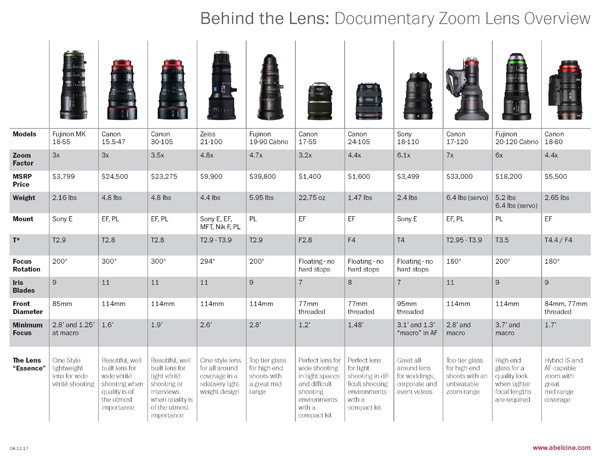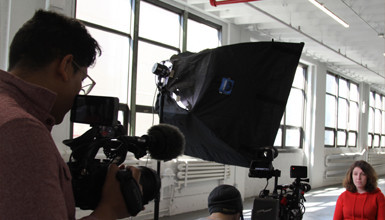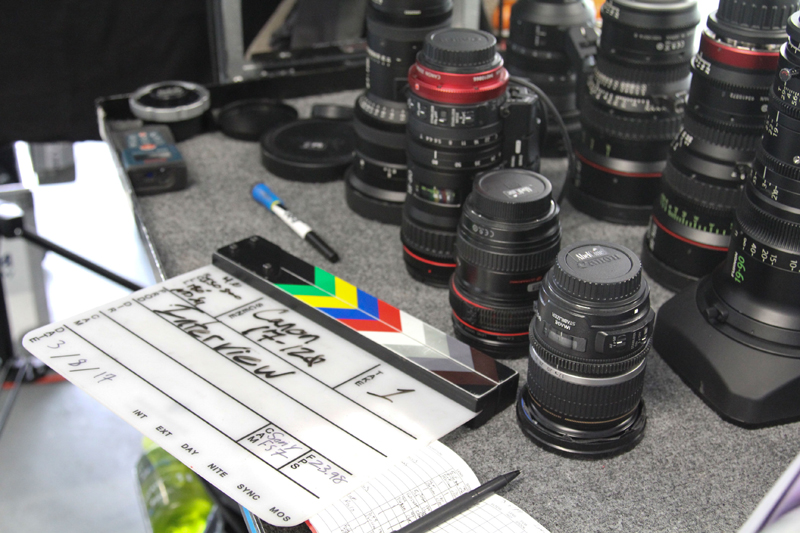
Now, with the advent of lightweight cinema-style zooms, many of which allow for switchable (or at least option-based) lens mounts, the choices have opened up dramatically. This is what led me to do this lens test. I wanted to compile all of this lens information into one place, so I could easily reference it when deciding on a lens for a project. On one hand, I want to test these lenses for myself. I want to see how they perform, how they handle, and how they fit into my shooting style. But I also want to do this test to share the information with the filmmaking community at large; opening a conversation around the tools available to us only strengthens the visual style of our collective work.
Doing a lens test of this magnitude is challenging, to say the least. I had the idea for this lens test for quite some time, but knew I would have difficulty doing it (and doing it right) by myself. So I approached AbelCine in New York about partnering with me to conduct these tests. They have the latest equipment on hand, as well as relationships with manufacturers for the lenses not yet released. They were excited by the idea and offered technical support and knowledge. They worked with the folks at Industry City in Brooklyn (the new home of AbelCine’s development center) to shoot our test scenes in, as well as their own facilities to conduct technical tests. They helped me put this vast amount of information together, the infrastructure to host the footage and the willingness to share this information to the world. Since the end goal of the test is opening a conversation with the filmmaking community at large, I could think of no better partner. I am indebted to them for the help they offered in running this important and valuable test.
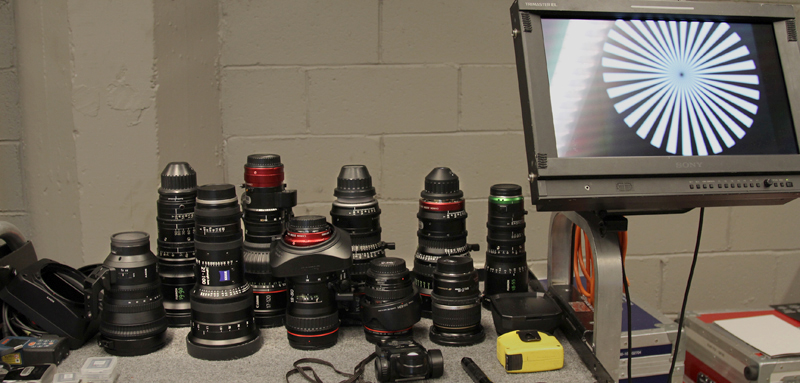
LENS CRITERIA
There are so many lens options out there, so I created a strict set of criteria to choose which lenses to test. All of the lenses in this test have a zoom factor of at least 3x. As a documentary cinematographer, I need lenses that cover an acceptable zoom range. Many cinema zooms offer better quality, but in doing so, restrict the zoom range of the lens. I do not generally have the luxury to change lenses often, so I need something with focal length flexibility. All of the lenses weigh under 6.5 pounds. While weight certainly has its advantages, such as better balance and smoothing out a shot, it can also wear you out when handholding for 10-15 hours per day. I also need a lens that strikes the proper balance between weight and functionality. I, of course, want a lens that provides the quality we strive for, especially as shooting in 4K (and beyond) becomes more prevalent. Lack of sharpness, color consistency, and contrast will certainly impact the look of your shots. But also having lenses that are poorly constructed or not properly “weatherized” for shooting in harsh conditions can really ruin your day (and your shot).
Unlike narrative cinematography, where you have a team of people supporting the camera department, documentary cinematography is a balancing act of size, weight, build, and quality of a lens, all while managing it alone or with minimal support. Price did not play a part in deciding which lenses to test. For some, you will be looking at these tests to determine which lens you want to buy. For others, you are looking to rent a high quality lens for a project. We may live in a world where camera and lens technology has dramatically come down in price, but it is not the end of the conversation. Lenses, like cameras, are just another tool in our toolbox. It’s up to us to choose the right tool for the job. Our role as cinematographers is to properly understand the pros and cons to any piece of equipment in order to make the right decision for any given situation. Depending on the situation and project, an $800 lens can sometimes be a better choice than a $40,000 lens!
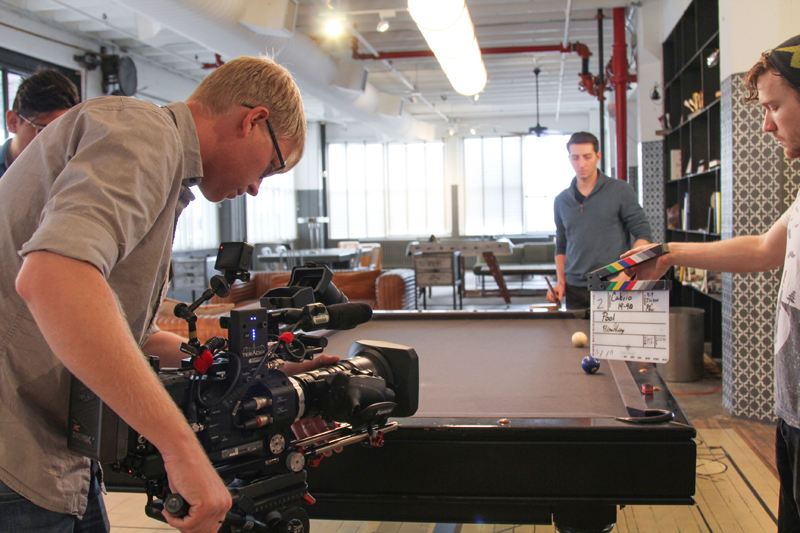
METHODOLOGY
This test was specifically designed to highlight the advantages of each lens, or to find where it shines. What is it about each lens that draws us to it for a given need? We have devised multiple shooting scenarios–an interior daylight scene of someone playing pool, a night exterior of two dancers under cafe lights, and a lit interview scene — all chosen to recreate the types of shooting and lighting environments we regularly find ourselves in. At the end of the day, any lens test is a subjective test. Our approach stems from questions I had and elements I wanted to further explore, so we placed the lenses in the real world. The lighting may not always be perfectly consistent (clouds and shadows move in real life). The shots are not always on a tripod or dolly with repeatable precision (neither is my operating on a documentary). To me, understanding the technical elements of a lens better informs me on how I make creative decisions. We purposely set out to not pit one lens against another, but rather to look at how each lens reacts in various situations. At the end of the day, every lens we tested is a lens I would use. Each has its purpose and place, and it’s up to us to determine when and where they shine.
THE LENSES
Here are the lenses included in the test. I have included some technical information with each lens, to better compare across the spectrum.
Each post will tackle a specific lens from the list. I will not only discuss the technical details of the lens, but will contextualize the information into real-world scenarios and possibilities. The topics will include:
- Technical specifications
- The build and functionality of the lens
- How the lens renders color and contrast
- Breathing
- Minimum focus and macro capabilities
- Bokeh
- Lens flares
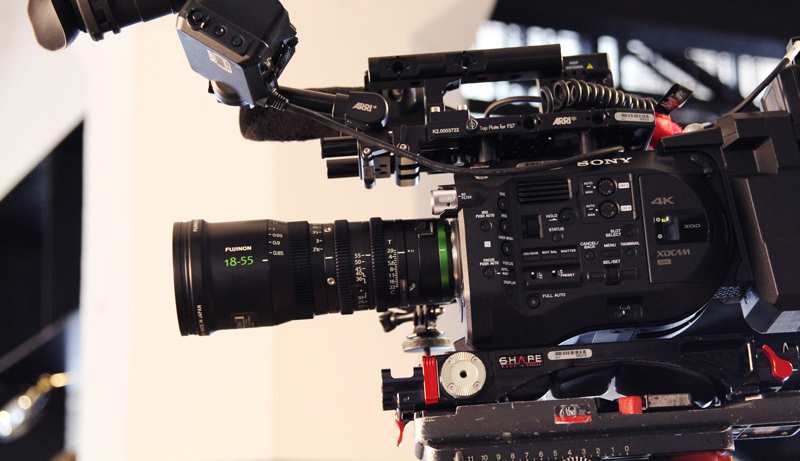
CAMERA
We tested all the lenses on the Sony FS7. Keeping the camera consistent across the individual tests is important. Every camera body has slight variances from sensor to sensor, so we felt it was necessary to remove any variables that would alter the image produced from lens to lens. As there are multiple lens mounts required for this test, the FS7 allowed us to employ the native Sony E-mount, and Canon EF and PL mounts with the use of Metabones adapters, without having to exchange bodies from one mount to another. We chose to shoot in UHD 3840×2160 to best see the resolution and sharpness of the lens. Since the purpose of this test is to examine the look of the lens and not the camera, we shot all the tests in the STD5 Gamma setting, Rec709. I did not want to alter the native recording with post-production grading, but instead wanted to see the image straight from the camera.
CONCLUSION
This lens test was incredibly informative for me, and will absolutely help shape the decisions I make on projects in the future. Having a reference for what the various lenses look like and how they handle will ease the conversation with directors and producers as we figure out what equipment to use for shaping our vision.
It was an honor to partner with AbelCine on compiling this extensive look at the multitude of lenses available to us as cinematographers. Shooting documentary films is an amazing journey — educational and informative to both the audience and the filmmaker. Camera and lens technology have come a long way, allowing us to create not only informative stories, but cinematic ones as well. I hope this information helps inform your creative decisions as a cinematographer, and I look forward to hearing your thoughts.
Be sure to tune in for each and every post on Behind the Lens – A Look at Documentary Zooms.















